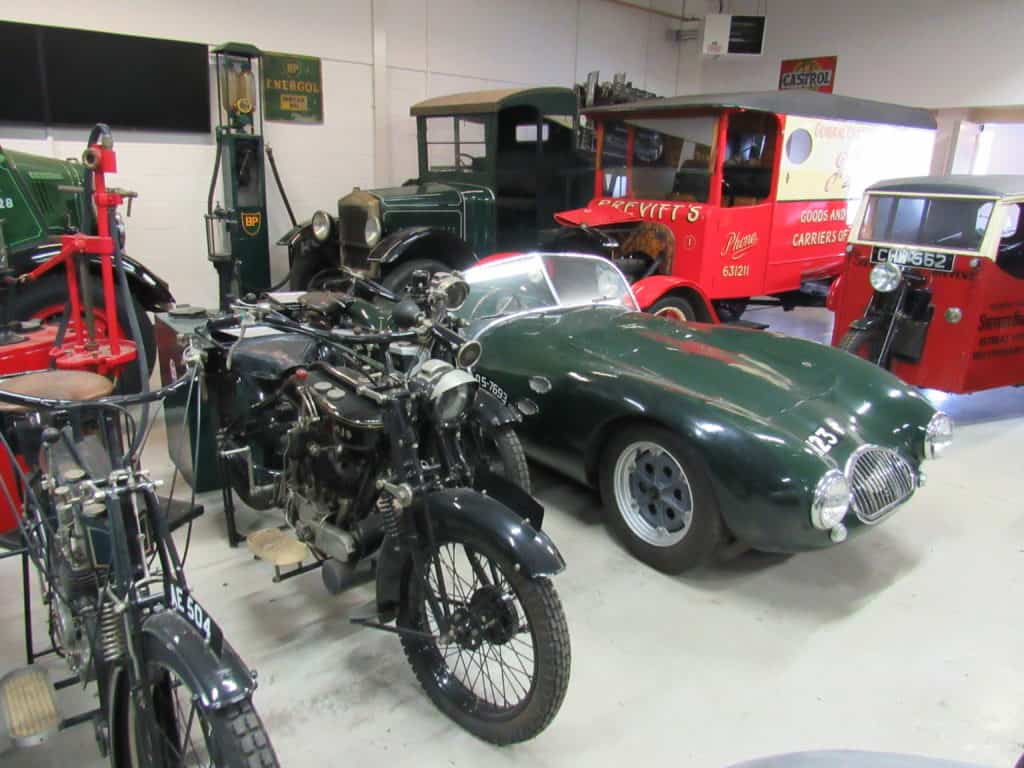The Black Country was a major centre for vehicle manufacturing with cycles, motorcycles, cars, lorries and buses all built in the region. In this episode the children find out more about the different vehicles.

How did people get around in the past?
In early Victorian times most people would have to rely on walking, or riding horses. Whilst there were carriages, drawn by horses, there was nothing like the cars and buses you’d see on the streets today.
The railways opened up the country for Victorians, enabling them to travel for leisure and holidays on cheap day returns. Trams and trolleybuses began to appear in towns and cities enabling people to travel further for work and for leisure.
The first car appeared in 1885 but cars wouldn’t be affordable to anyone other than the very wealthy for some time. It was around the same time, the turn of the century that the first motorbike was sold.
After the first world war, production of cars increased massively – the number of cars in the 1930s doubled from 1 to 2 million cars – cars were becoming more affordable although it wasn’t until the 1960s that cars became a common thing for a family to own.

Built in the Black Country
From the early 1900s, the engineers and coach builders of the Black Country turned their expertise to the new technology of motor cycles and motor cars.

Brands such as AJS, Star and Sunbeam became household names. Wolverhampton based Clyno was once the third largest car manufacturer in Britain, while AJS and Sunbeam carved out formidable reputations in TT races and land speed records.
A Special Sunbeam
In our story we learn that the boy’s father worked on the Sunbeam touring car, a famous and popular export all around the world, built in 1903.
The one in the museum’s collection is one of only four believed to exist from this year.
Sunbeam was founded by John Marston, who originally manufactured tin-plate and Japan-ware in Wolverhampton. By 1899 he had built a ‘horseless carriage’ with Thomas Cureton, and in 1901 he exhibited a Sunbeam at the Crystal Palace Show. In 1905 the Sunbeam Motor Car Company was formed, producing cars at the top end of the market. In 1912, the first Sunbeam motor cycle hit the market. It sold under the slogan ‘The Gentleman’s Motor Bicycle’. Aero engines and motor boat engines were also produced under the Sunbeam name.
Sun Victoria
Another car we learn about in the episode is the Star Victoria. It was also known as the Doctor’s Victoria because it was a popular choice with medical men.
Tram-Tastic!

In the story the children take a ride on a tram. Do you know what a tram is? It’s a vehicle that can take many passengers, like a bus, and is powered by electricity, either from the road or from overhead wires. Early trams would have been pulled along by horses. You might have them in the places you live as trams are popular today, especially in city centres – although we don’t need horse power today!
The one in our story might have been like Tram 49 in the museum’s collection. This Wolverhampton Corporation double decker tram was built in 1909. It is a typical Edwardian tramcar with an ornate lower saloon and open upper deck with traverse seating.
Originally equipped with the Lorain system – taking its power supply from studs in the road – it was later converted to run from overhead wires. The tram was painstakingly restored by the Black Country Museum Transport Group in 2004.
Top Ten Driving Facts
With more cars being produced in the 20th century the government had to work hard to prevent accidents. These happened frequently because the highway code wasn’t produced until 1930 and there wasn’t a driving test at all until 1935! Now the driving test’s been going for 80 years. Here are the top 10 driving test facts from UK Government:
- Mr Beere was the first person to pass the driving test in 1935: he paid the grand total of 7s 6d (37.5p) to take the test.
- There were no test centres in 1935 so you had to arrange to meet the examiner somewhere like a post office, train station or town hall.
- The test was suspended for the duration of World War 2 and didn’t resume until 1 November 1946.
- In 1975, candidates no longer had to demonstrate hand signals.
- The theory test was introduced in 1996, replacing questions about The Highway Code during the practical test.
- Driving was much more hazardous 80 years ago – 7,343 people were killed on Great Britain’s roads when only 2.4 million vehicles were in use – in 2008, 2,538 people were killed with 26.5 million vehicles on the road.
- Candidates could book their theory test online for the first time in December 2001.
- The pass rate in 1935 was 63% compared to 46% in 2009 .
- 1969 saw the first driving test set for an automatic vehicle.
- Since 1935 more than 46 million tests have been taken.
Activity: Draw a map

How well do you know your town?
Why not draw a map of your local area!
Remember to include the all places that are important to you.
Adventures Through Time is made with support from The Black Country Living Museum




 Apple Podcasts
Apple Podcasts Spotify
Spotify Google Podcasts
Google Podcasts Player FM
Player FM